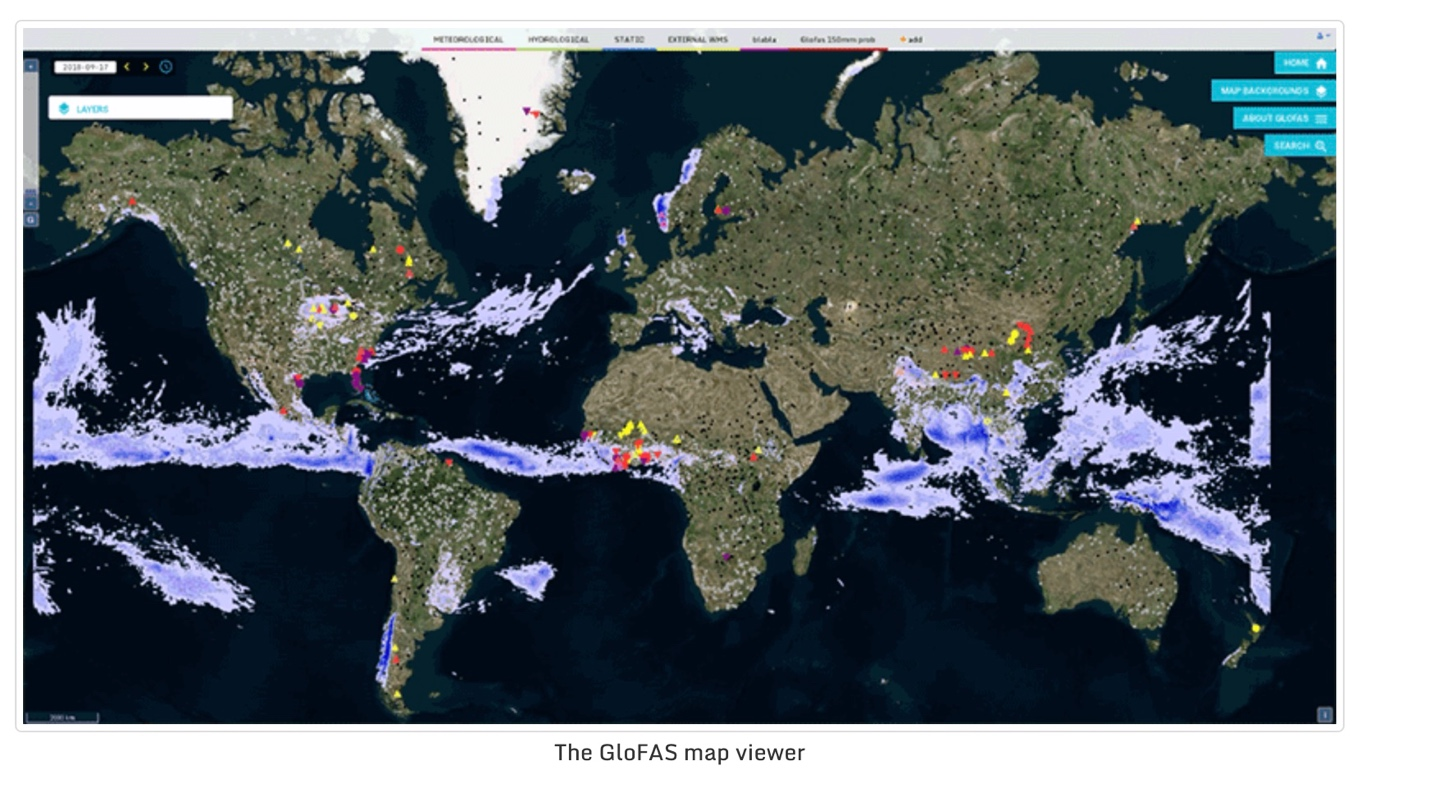Since 2018, the Global Flood Awareness System (GloFAS) is an operational system of the
European Commission’s Copernicus Emergency Management Service, for forecasting and monitoring floods
across the world.
GloFAS produces daily flood forecasts (GloFAS forecasts, since 2011) and monthly seasonal
streamflow outlooks (GloFAS Seasonal, since November 2017).
In 2021, a new operational service for the automated, global, satellite-based monitoring of floods
in near real-time (NRT) was integrated into GloFAS. The new global flood monitoring component of GloFAS
is based on the automated processing of Copernicus Sentinel-1 Synthetic Aperture Radar (SAR) satellite data,
using an ensemble approach, based on three separate state-of-the-art satellite flood detection algorithms.
The aim of GloFAS is to complement relevant national and regional authorities and services,
and to support international organizations in decision making and preparatory measures before major
flood events (particularly in large trans-national river basins). GloFAS prediction only focuses on
rivers and does not provide real-time forecast information on flash flood risk or coastal flooding,
nor on inundated areas.
GloFAS data are freely accessible to all registered users through through a dedicated web platform,
the GloFAS map viewer.
Register here.
GloFAS map viewer and GloFAS products
are tailored to give a quick overview of current and future hydro-meteorological situation, and of
the ongoing and upcoming flood events. Additional information including detailed evolution of
streamflow forecasts is provided at reporting points.
GloFAS forecasts are updated once per day while the satellite-based flood monitoring is continuously
updated as soon as a new Sentinel-1 image is available.
Download: GloFAS poster, GloFAS flyer
